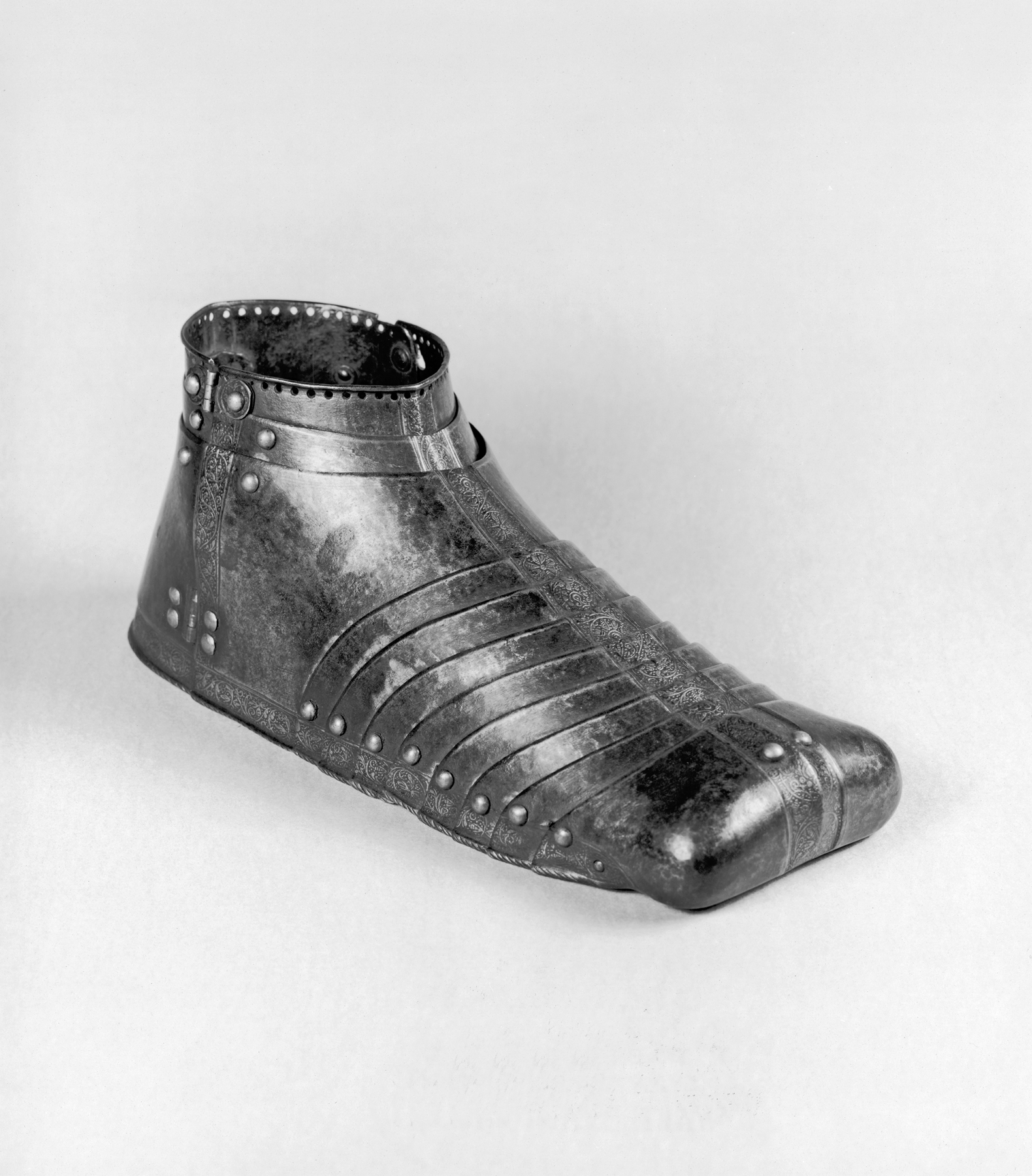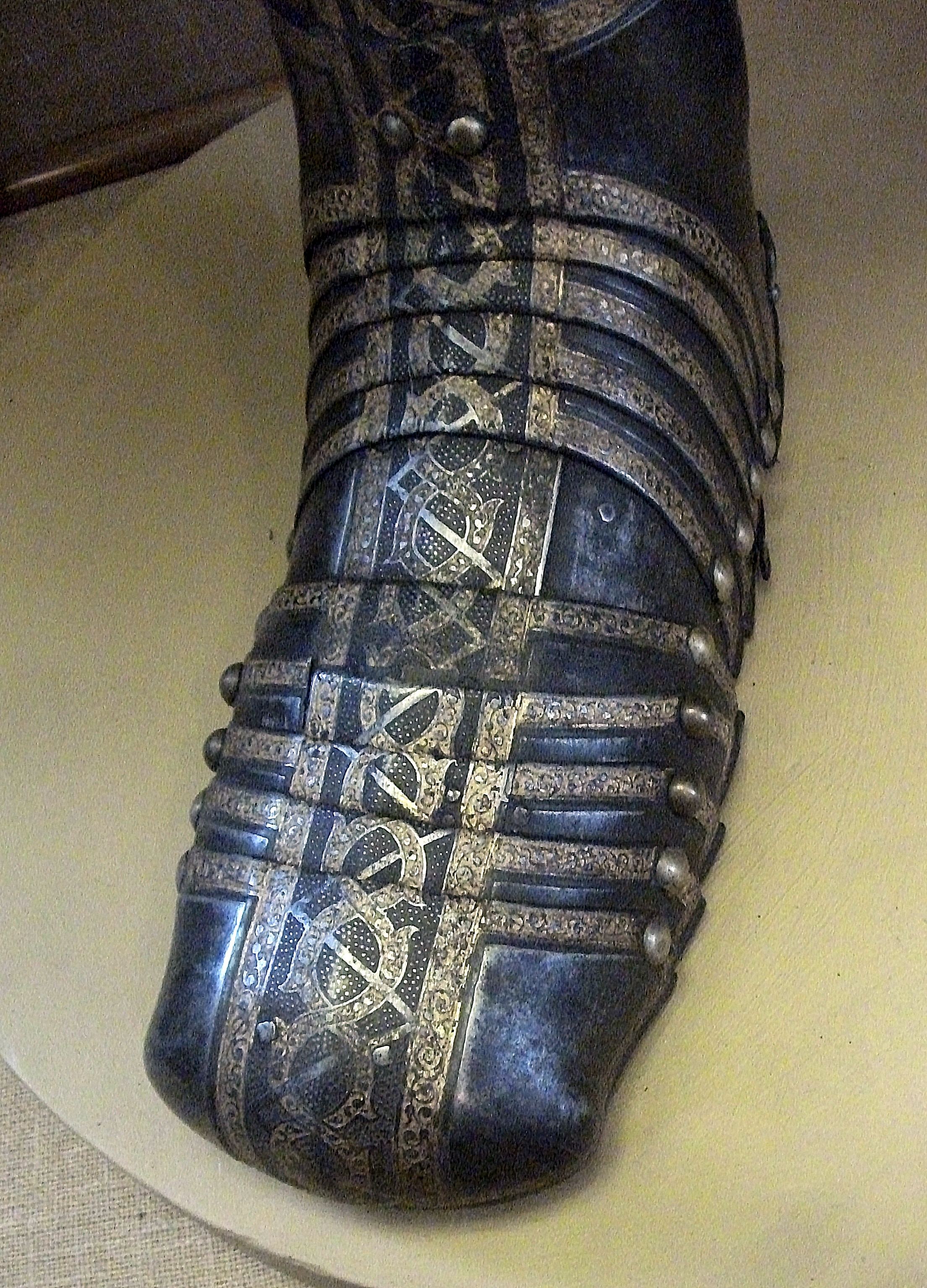Sabaton on:
[Wikipedia]
[Google]
[Amazon]

 A sabaton or solleret is part of a
A sabaton or solleret is part of a
File:HJRK A 62 - Armoured shoes of Maximilian I, 1485.jpg, Sabatons of Emperor Maximilian I, c. 1485
Image:Sabatons evolution by Wendelin Boeheim.jpg, Sabatons' shape evolution by Wendelin Boeheim:
File:Plate sabatons.png, Sabatons with tapered points ( poulaines, pikes, or beaks)
File:Richard de Beauchamp effigy Warwick Church.jpg, Gilded bronze effigy at

knight
A knight is a person granted an honorary title of a knighthood by a head of state (including the pope) or representative for service to the monarch, the church, or the country, especially in a military capacity.
The concept of a knighthood ...
's body armor
Body armour, personal armour (also spelled ''armor''), armoured suit (''armored'') or coat of armour, among others, is armour for human body, a person's body: protective clothing or close-fitting hands-free shields designed to absorb or deflect ...
that covers the foot.
History
Sabatons from the 14th and 15th centuries typically end in a tapered point well past the actual toes of the wearer's foot, following fashionable shoe shapes of the era. Sabatons of the late 15th and early 16th century followed theduckbill shoe
A duckbill, bearpaw or cow's mouth was a style of shoe with a broad toe which was fashionable in the 15th and 16th centuries. This style started with Charles VIII of France, who had an polydactyly, extra toe, and was later worn by Henry VIII of ...
s of the time, ending at the tip of the toe but often extending greatly wider. The sabatons were the first piece of armour to be put on, and were made of riveted iron plates called '' lames''. These plates generally covered only the top of the foot. Some sources maintain that the broad-toed variant is the true sabaton, whereas the earlier versions should be referred to as a solleret.
At least in theory, French princes and dukes were allowed to have toes of Gothic sabatons times, lords (barons and higher) two times, and gentry only one time the length of their feet. If we assume as the standard length, these would be , , and , respectively.
An earlier solution was for the mail of the chausses to completely cover the foot, but later the mail terminated at the ankle, either overlapping the outside of the sabaton or extending beneath it.
The effigy of Richard Beauchamp, 13th Earl of Warwick in the Collegiate Church of St Mary, Warwick, shows how 15th century Italian-style sabatons would have been worn. These consist of a toe cap, four articulated lames, a foot plate and ankle plate, and a hinged heel cap, joined with buckled straps. Although the spur
A spur is a metal tool designed to be worn in pairs on the heels of riding boots for the purpose of directing a horse or other animal to move forward or laterally while riding. It is usually used to refine the riding aids (commands) and to ba ...
s are missing from the effigy, remains of rivet holes and staples may represent the way that the spurs would have been directly attached to the heel cap of the sabaton, rather than being strapped on afterwards.
Other uses
"Sabaton" is also the name of a type of broad-toed Flemish shoe, popular in the Late Middle Ages.Sabaton
A sabaton or solleret is part of a knight's body armour, body armor that covers the foot.
History
Sabatons from the 14th and 15th centuries typically end in a tapered point well past the actual toes of the wearer's foot, following poulaines, f ...
is the name of a Swedish heavy metal band who write songs based on military history.
Warwick
Warwick ( ) is a market town, civil parish and the county town of Warwickshire in the Warwick District in England, adjacent to the River Avon, Warwickshire, River Avon. It is south of Coventry, and south-east of Birmingham. It is adjoined wit ...
, England, of Richard Beauchamp, 13th Earl of Warwick who died in 1439, showing the underside of his sabatons
See also
*List of shoe styles
This is a list of shoe styles and designs. A shoe is an item of footwear intended to protect and comfort the human foot while doing various activities. Shoes are also used as an item of decoration. The design of shoes has varied enormously throug ...
References
{{Historical clothing Historical footwear Medieval armour Western plate armour